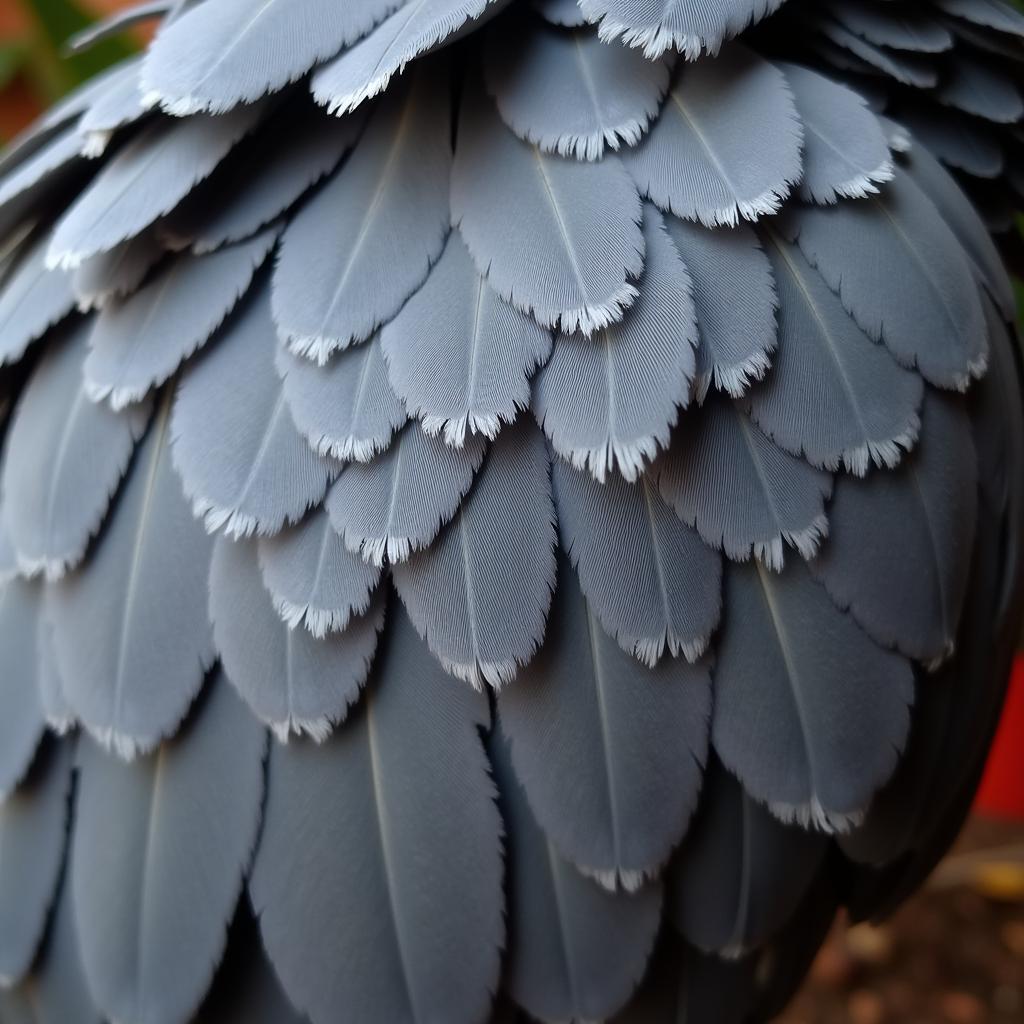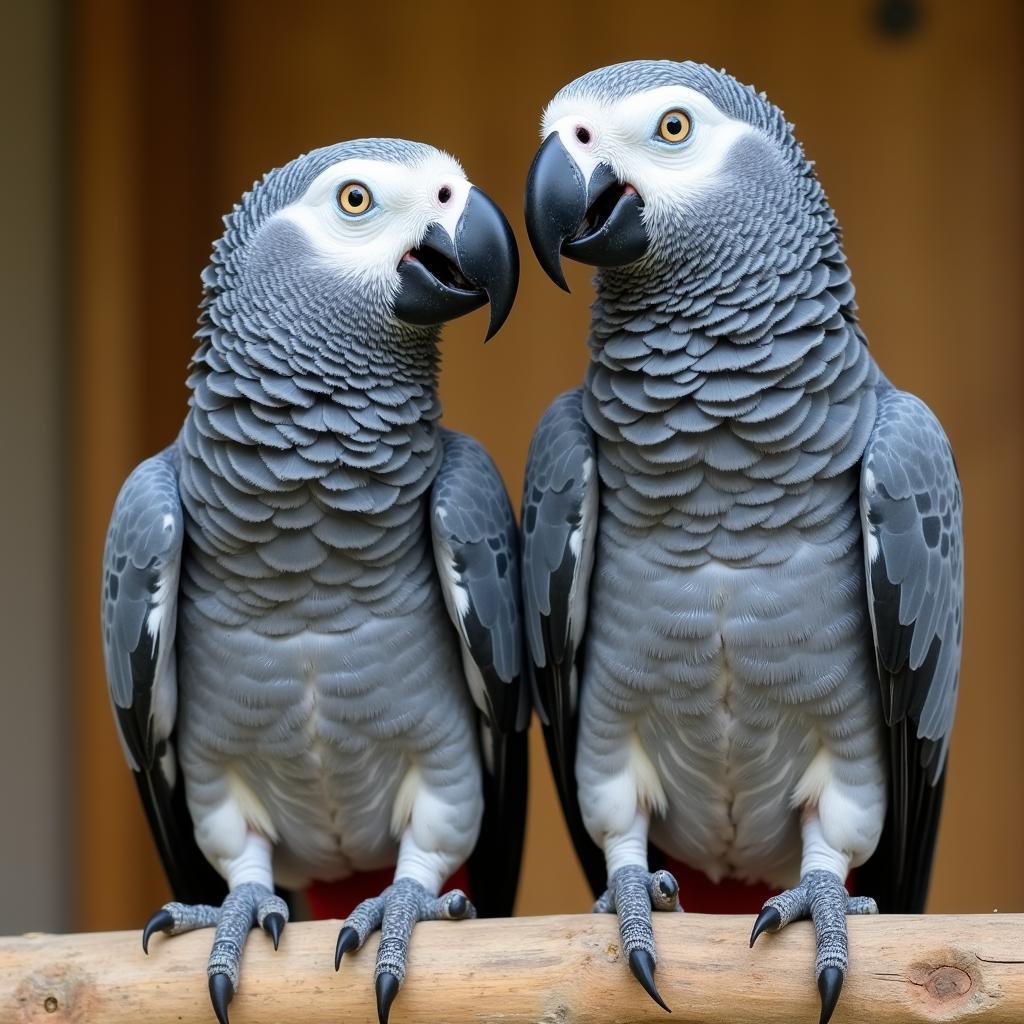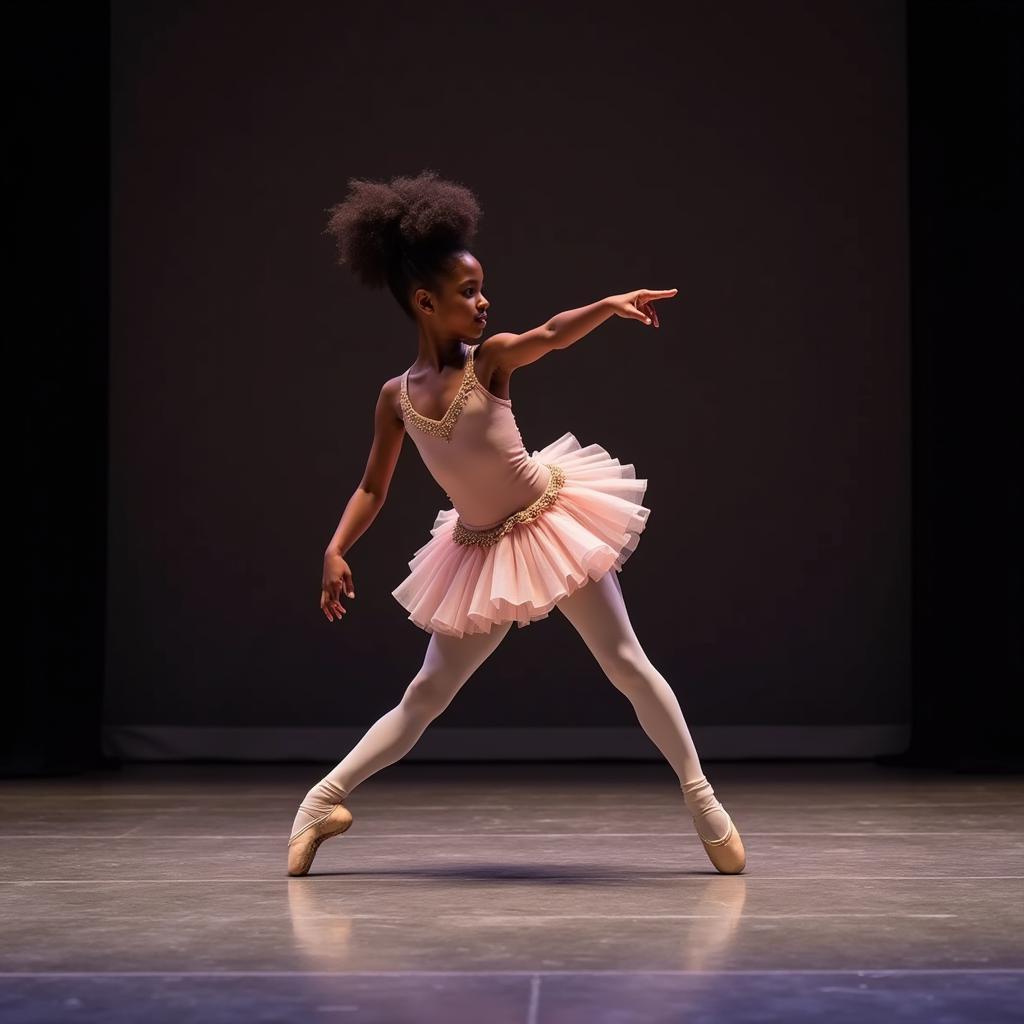Unveiling the Beauty of African Grey Parrot Colors
The African grey parrot is known for its remarkable intelligence and ability to mimic human speech. But beyond their cognitive prowess, these birds captivate us with their stunning plumage. While often associated with shades of grey, African Grey Parrot Colors are surprisingly diverse and nuanced. Let’s explore the fascinating world of these avian beauties and uncover the secrets behind their feather patterns.
Shades of Grey: More Than Meets the Eye
The term “grey” hardly does justice to the intricate coloration of these parrots.  African Grey Parrot Feather Close-Up Their plumage is a study in gradients, with variations ranging from light silver to deep charcoal. This spectrum of greys is not uniform but rather adorned with fine white edging on each feather, creating a beautiful, textured appearance.
African Grey Parrot Feather Close-Up Their plumage is a study in gradients, with variations ranging from light silver to deep charcoal. This spectrum of greys is not uniform but rather adorned with fine white edging on each feather, creating a beautiful, textured appearance.
Congo African Grey vs. Timneh African Grey: Spotting the Difference
Within the African grey parrot family, two main species showcase these captivating grey hues: the Congo African grey and the Timneh African grey.
-
Congo African Grey: The larger of the two, the Congo African Grey boasts a vibrant scarlet tail and a predominantly light grey body. This light grey transitions to a darker shade on their heads, creating a visually striking contrast.
-
Timneh African Grey: The Timneh African Grey, smaller in stature, exhibits a darker charcoal grey throughout its plumage. Their tails are a deep maroon, distinguishing them further from their Congo cousins.
 Congo and Timneh African Grey Parrots: Side-by-Side Comparison This side-by-side view helps in clearly distinguishing the unique color characteristics of each species.
Congo and Timneh African Grey Parrots: Side-by-Side Comparison This side-by-side view helps in clearly distinguishing the unique color characteristics of each species.
Beyond the Grey: Unexpected Hues and Variations
While grey dominates their color palette, African grey parrots can surprise us with unexpected hues.
-
Red Factor African Greys: Some African greys carry a genetic mutation that results in the presence of red feathers. These “Red Factor” African Greys are highly sought after by breeders and enthusiasts for their unique and striking appearance.
-
Color Mutations: Beyond the Red Factor, other rarer mutations can lead to variations in color, including shades of blue, yellow, and even albinoism.
These variations are a testament to the genetic diversity within the species and continue to fascinate bird lovers worldwide.
The Purpose Behind the Plumage: Camouflage and Communication
Why are African grey parrots adorned in these specific colors? As with many creatures in the animal kingdom, their coloration is intrinsically linked to survival.
-
Camouflage: The mottled grey plumage of the African grey parrot provides excellent camouflage in their natural forest habitats. The varying shades of grey help them blend seamlessly with the shadows and foliage, making them less visible to predators.
-
Communication: While not as vibrant as other parrot species, subtle variations in their grey tones, particularly around the face and head, can play a role in communication. These subtle shifts in color may be used to signal emotions or intentions to other parrots.
More Than Just a Pretty Face: Understanding African Grey Parrots
The captivating colors of African grey parrots are just one facet of these fascinating creatures. Their intelligence, ability to mimic, and complex social interactions make them truly remarkable animals. african bird identification opens up a world of information on not just African Grey Parrots but a plethora of other fascinating species. By appreciating their beauty and understanding their needs, we can contribute to the conservation of these intelligent and captivating birds.
FAQs about African Grey Parrot Colors:
Q: Do African grey parrots change color as they age?
A: While the overall plumage of an African grey parrot remains relatively consistent throughout its life, subtle changes can occur. Younger birds may have slightly duller coloration, which brightens as they mature. Additionally, some individuals might exhibit slight variations in shade or pattern with each molt.
Q: Are brighter colored African grey parrots rarer?
A: Generally, yes. Color mutations leading to brighter or more unusual colors are relatively rare in African grey parrots. The most common mutation is the Red Factor, while other variations like blue or yellow are significantly less common.
Q: Can you tell the gender of an African grey parrot by its color?
A: Unfortunately, no. Unlike some bird species where males and females exhibit distinct color differences (sexual dimorphism), both male and female African grey parrots share similar coloration.
Need More Information?
To delve deeper into the world of African grey parrots and their fascinating characteristics, explore these resources:
- about african grey parrot in telugu
- african love birds price in india
- african grey parrot food uk
- african grey parrot information
These links provide comprehensive information on various aspects of these incredible parrots.
We’re Here to Help
Have more questions about African grey parrot colors or other aspects of their care and well-being? Don’t hesitate to reach out! Contact us at:
Phone: +255768904061
Email: [email protected]
Address: Mbarali DC Mawindi, Kangaga, Tanzania.
Our dedicated team is available 24/7 to assist you with any inquiries. Let’s celebrate and protect these remarkable creatures together!


